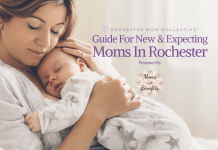
Have you decided to pursue adoption, but are not sure what exact route to take? This decision will likely take layers of soul-searching, research, and contacting community resources/agencies before making a final decision. You can read about my practical tips for this endeavor here: What To Do When You’re Considering Adoption. Plus, read over 10 Questions to Ask Yourself When Considering Adoption to help with a realistic assessment of your current family.
When it comes to deciding which adoption route your family takes, let’s first acknowledge what each endeavor has in common. Then we’ll overview the various routes of adoption to gain a bit more clarity into the differences.
What Different Adoption Routes Have in Common
First off, all adoption routes have several things in common. They each require lots of paperwork, a home study with in-home visits, sometimes a home study update, fingerprints, background checks, and lots of waiting for other people to do their jobs to move the process along. Check out Adoption & Foster Care: What Is a Home Study? for more information about home studies.
Prospective parents are required to partake in education on varying topics such as bonding and attachment, cultural awareness, and the effects of trauma. The agency will provide recommendations and specific requirements for this step.
Upon the child’s placement into your home, post-placement supervision begins, which involves caseworker visits to check in and provide support.
Each route requires sensitivity to the child’s specific needs and losses. Upfront knowledge of hurdles your child may have already faced helps in assessing what your family can provide. Prospective parents also need an awareness of the struggles their child may bear for years and milestones to come.
When you are ready to go into this, willing to learn and keep a realistic view of what your family and lifestyle can give — you’re ready to not be ready, but to roll with it all.
Disclaimer: This will not give you all the information you need to make an informed decision about adoption, and laws/requirements do change. (I won’t be sharing about kinship adoptions, as those placements happen based on the immediate need of a child and finding a family tie who can care for them.)
Domestic Infant Adoption
This route can be taken through an adoption lawyer or an adoption agency. If a personal connection with a birth mother isn’t made ahead of time, typically you create a book/personal site about your family. This is presented (by a lawyer/adoption agency, or by word of mouth) to a birth mother who is considering making an adoption plan for her baby.
If the birth mother chooses your family to raise her child, there are different ways this can go. A meeting may be set up with the birth mother, or she may prefer to have the adoption “closed” — which would not allow communication between you two directly.
Depending on how far along her pregnancy is, there may be financial agreements/support given to the birth mother for a time. Legal/agency fees are also a part of this process.
The timeline of child placement into your home is vastly unknown: months to years. But in the end, the birth mother has the final say in her adoption plan, and she may change her mind. It’s important to be understanding and sensitive.
Keep in Mind: When a baby is placed into a new family, they are not a “blank slate” as many people assume. This baby has experienced loss of attachment to the primary person they already know in the depths of their soul.
Foster Care Adoption
Adoption through foster care varies widely by state, county, and individual case — through the Department of Family Services or another foster care agency. You can either adopt a child whose parents’ rights have already been terminated (local or even across state lines) or foster a child with the possibility of eventually adopting. In the latter case, the system first aims for reunification with the biological parent(s).
In the foster system, most of the children in need of permanent families are older children, sibling groups, and those with special needs. Whether going straight to adopting or becoming foster parents, you would need to complete the state training and become certified to foster.
If you’re outright adopting, the child may continue living with their foster family during your process with the legal system, there may be gradually increasing visits, or they may be placed in your home before the adoption becomes finalized. For older children, typically the child has a say in whether or not they want to be adopted by a presenting family.
A child’s biological family may or may not stay in the child’s life. The amount of interaction between biological and foster/adoptive families is variable. This could range from regular visits, contact at holidays, yearly letters, or nothing at all. The county/child and biological family legal counsel negotiate the subsequent contact, and it is legally binding.
The financial cost is low compared to other avenues. Attorney fees for finalization in court are covered by the county. An adopting family would incur attorney fees if you choose to obtain legal counsel before the termination of biological parents’ rights (TPR) or their surrender to those rights.
The timeline for adopting through the foster care system varies widely from case to case. If fostering first, waiting for TPR can take years. There are even vast differences in timelines from a child entering foster care to TPR, and from TPR to being adopted.
Keep in Mind: Children removed from their families and placed in the foster care system often experience layers of trauma: the removal from their first family, plus the cause for removal. Current state laws are to first support the biological family in keeping kids in the home. When all resources are deemed unsuccessful, then removing the child from their family is considered.
International Adoption
Also referred to as intercountry or transracial adoption, this route involves several agencies working together, stateside and in the child’s mother country. You would need to find an agency stateside that works with the specific country you’re considering. Make sure you do your due diligence with deciding on a reputable adoption agency and country. Unfortunately, there are nightmarish adoptions that occur forcibly or by manipulating birth parents.
Each country has qualifications and expectations that need to be met by the adopting parents — often beyond what a stateside agency has. Some have restrictions on parents’ age, number of kids already in the home, or income, for example. Take note of the country’s travel requirements for adopting parents. The process may require you to travel multiple times to the country or stay for an extended amount of time. Depending on your work and child situation, this could limit your options.
International adoption is expensive because of all the hands involved. Many families need to finance, work extra hours/jobs, or fundraise to gather what is needed throughout the process.
Many countries have closed to international adoptions in recent years, for varying reasons, so there is always a risk with this. However, adoption agencies typically have a good idea of the state of the countries they work with. They will also have a general idea of the timeline from start to finish, so long as laws don’t change.
Keep in Mind: Along with losing their biological families, children adopted internationally have also lost either their orphanage relationships or foster families. Other traumas in their past are very possible and likely unknown. The child has usually lost being part of the dominant culture, their birth language, familiar foods, and smells, to name a few. Consider how you can learn about and incorporate your child’s birth culture into your lives together. It’s important to be respectful and thoughtful about your child’s cultural history and racial identity — no matter how your child feels about it, as it will undoubtedly shift and evolve as they grow and mature.
The Final Decision
If you’re unsure which adoption route is best for your family, don’t decide in haste! Continue to explore, research, and talk with professionals and people who have had adoption touch their lives in one way or another. There are a lot of factors to consider. Choose what is best for your family in providing for a child. Though it will be nerve-racking throughout the process, you will come to feel a deeper peace about your chosen adoption route. That’s when you’ll know it’s go time!
Thank you to Tammi D., Lindsey S., and Devin P.B. for contributing details and further insight for this article!















